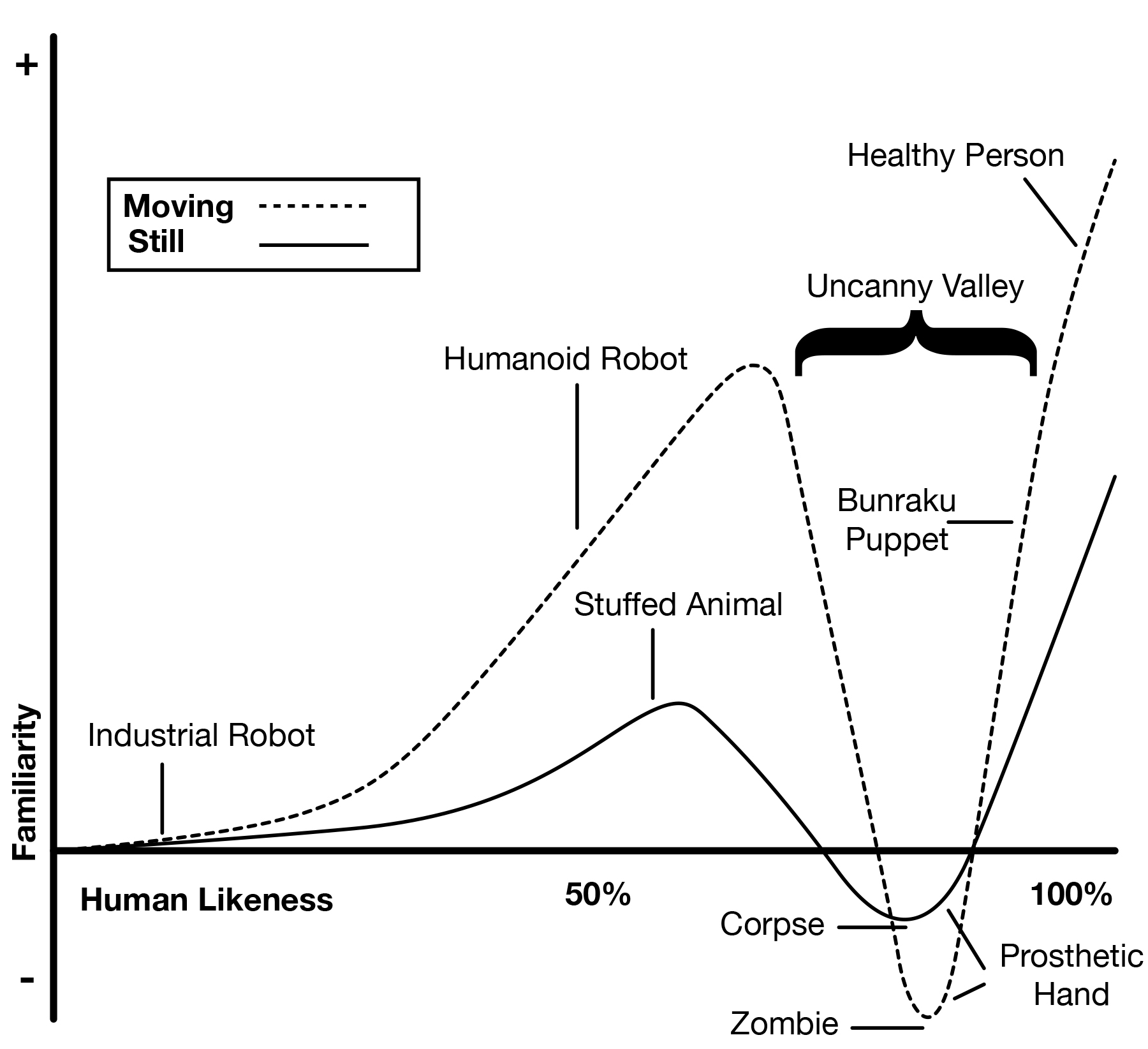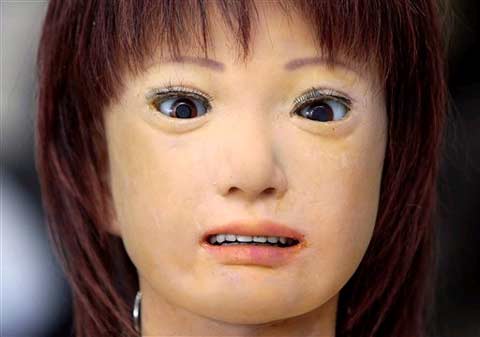As we technologically weave our society into a more machine-centric fabric, machines are going to take on more and more human attributes. This means that robots will try to look and interact with us more like humans do. A funny thing happens on the way to becoming human though. A repulsive emotion buried deep inside all of us flares up at a crossover point between clearly mechanical and clearly humanoid. This visually triggered effect has been called the “Uncanny Valley,” a term coined by professor Masahiro Mori in1970 based on a concept from Sigmund Freud.
Robots that are very clearly machines do not tend to scare us. Likewise, robots that are very
human don’t frighten us. But robots in this valley do repulse and intimidate us. This is a buried physiological response to rather specific stimuli. As designers of the machines that people interact with, it is important to make sure that people accept the machines in their daily lives. For example, a rescue robot will not be effective if it scares children and other people in need.

People’s reactions to this Uncanny Valley effect have been demonstrated to be repeatable. In fact, the effect has been graphed as a mathematical function. Many speculations have been made as to why this seemingly genetically coded response lives within us. Some say it is to prevent similar but different species from mating. Others purport that it is part of an innate sense that seeks to protect ourselves from disease that makes us shy away from an organism that may be perceived as carrying a sickness. And still others claim this is a genetic memory from times way back before history encoded in mitochondrial DNA.
The Uncanny Valley may not be purely a reaction to the physical. Faces in video games are still being studied regarding people’s reactions to them. Animation, too, has been able to demonstrate this with cartoon characters kids like, and those that they don’t. This is tapping into that subconscious area at an early age for the purpose of creating character and artificial ‘friends’ for children.

Source: Gnomon School of Visual Effects.
On the other side of the coin, images of static robots that have not crossed the Uncanny Valley can arouse a “creeped out” response. Take, for instance, some of the design attempts to create robotics with real-life facial features. Even without motion, robots that look too life-like make humans uneasy. Motion compounds this uneasiness, especially if it is not fluid and natural.
This is an important concept to understand for those creating companion robots. An elderly and aging populationor those afflicted with some form of dementia may benefit from a companion robot that is responsive enough to comfort and assist, yet also welcoming and non-intimidating. In many cases, like a loyal dog, the vision of an Asimov-style protector companion machine would draw even little Timmy away from Lassie. But in order to achieve this level of trust, comfort, and ease, we must understand and overcome the Uncanny Valley. Otherwise these machines will remain, at least to human perception, cold and soulless.
By Jon Gabay for Mouser Electronics
Advertisement
Learn more about Mouser Electronics





